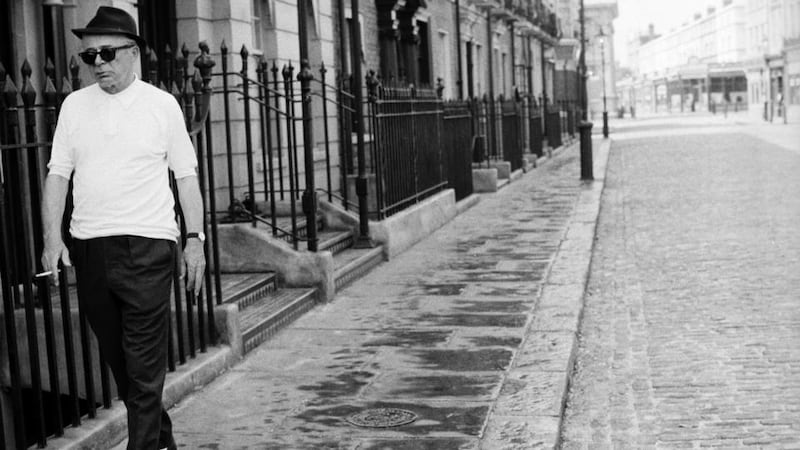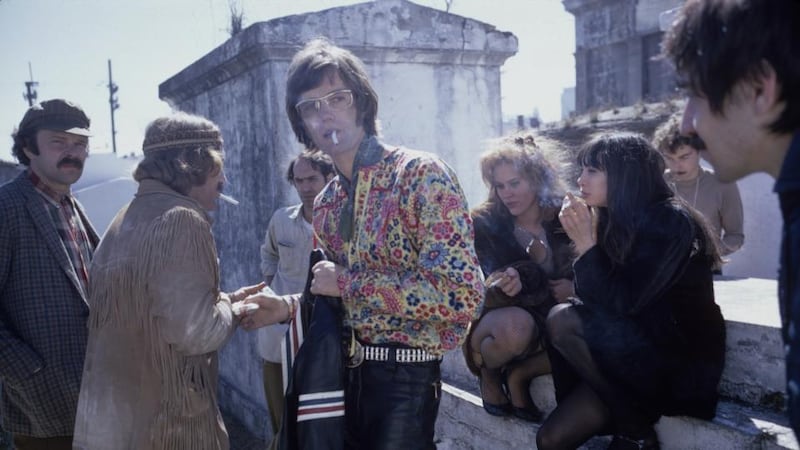The first photograph Susan Wood remembers taking was a self- portrait. She positioned the camera on a bench or stool, stood back and took the picture. "I just wanted to see how that worked," she says.
Her camera wasn't trained on herself for long. When she won a cash prize in an art competition, Wood bought a Leica while in Europe on the "grand tour" with her parents. On her return, she made a portfolio and went from magazine to magazine. Harper's Bazaar bought a photo of St Mark's Square in Venice and spread it across two pages. "That was big stuff, to get a double-page spread. They took another couple of pictures of that trip and published them. Those were my first, and I was delighted."
Thus began a career in photography that would see Wood, now in her late 60s, capture some of the biggest names of the era, as she took candid and tender portraits of Jayne Mansfield and Susan Sontag, Norman Mailer and Andy Warhol, Gloria Steinem and Frank Gehry, David Hockney and Ralph Lauren.


She spent the 1960s, 1970s and 1980s photographing for Vogue, Look, Life, People and New York, sometimes twinning her photography with her own writing. Working with 20th Century Fox, Paramount Pictures and United Artists, she documented movie sets on major pictures as Easy Rider, Leo the Last and Modesty Blaise.
New York at that time “was very liberating”, says Wood. “It was very exciting, energetic. Originality came to the fore, freedom to try and find your calling, your dreams, to pursue your vision of what you might be. It was wonderful.”
Now Irish photographer Deirdre Brennan, in association with Jameson Dublin International Film Festival, is celebrating her work in Close Up, an exhibition at the City Assembly House on South William Street in Dublin, which runs from today until February 22nd.
Brennan, who worked as a photographer with the New York Times for seven years, has been exploring Wood's archive for the best part of a decade. When Brennan got to Wood's home in Amagansett, in East Hampton, Long Island, she realised there was a treasure trove waiting to be archived. "I just didn't think such great work should stay in the basement. I thought it should come to life," says Brennan. "We've only kind of scratched the surface. There's millions more images in the basement."
The good and bad of Easy Rider
Wood's involvement with the groundbreaking 1969 film Easy Rider wasn't just as the on-set photographer. Dennis Hopper and Peter Fonda were trying to get their story across to producer Bert Schneider, who had managed to bring the sitcom The Monkees to television. Wood had just arrived in LA to write an article for Look magazine, and Fonda and Hopper were fretting about the Easy Rider story, the submission of which was reaching a deadline or else the money to make the movie wouldn't materialise.
Wood encouraged Fonda and Hopper to tell her their story on tape. "It sounded terrific," she remembers. "Dennis went off to see Burt Schneider, came back an hour later and had a cheque in his hand." They went to a Brown Derby restaurant to celebrate. By her own admission, Wood was now "golden", but on the set, things would prove a little trickier.
“Dennis, because he was very, very egocentric, and he was a photographer himself and he did so many things, he just wanted to do everything. Some tensions arose, and after this shoot I thought it would be very difficult to go on working with him. And I left and put away the material and went on with my life. I couldn’t go on working with Dennis. I put away the film, so nobody’s seen these pictures.”
Betrayal on set
In fact, few stills emerged from the set of Easy Rider. There are the iconic photographs of the young men on motorcycles, but Wood's shots offer a much more candid, colourful, and insightful tale of the set and its actors.
Her insight extends beyond the visual, however, as she recalls one of the more emotional parts of filming. “Peter was the most kind, considerate, thoughtful individual, who wanted to see Dennis [realise] his vision, and he nurtured him and coddled him and did much to keep him going, because he was such a nervous, difficult character. And yet Dennis on the other hand betrayed him. Dennis had promised never to ask him about his mother’s suicide.”
Fonda’s mother, the socialite Frances Ford Seymour, killed herself on her 42nd birthday. “And the first scene that he shoots in New Orleans in the cemetery is that he puts Peter in the arms of a statue of an angel and he says, ‘I’ll tell you what to say and feed you the line’, because it was very ad lib, very much of the style of the Italian street film-makers. And he said ‘Okay, now talk to the angel about your mother’s suicide’. Peter responded and he cried and was full of sorrow and it was a great scene, a brilliant thing. When he came down, he felt betrayed. I have pictures of Dennis smiling and thrilled, and Peter crestfallen, taking the hand of an actress and just walking away and being very sad. They were very close friends, but there were moments that were difficult.”
Getting close to John and Yoko
Wood also excelled in developing relationships with other stars, knowing when to push and knowing when to pull back, which resulted in some of the most famous photographs of John Lennon and Yoko Ono.
“If they feel that you are pushing too hard, it’s not so good,” she says of working with artists, actors and singers.
"I can only give you the example of John Lennon and Yoko Ono. The story was a major magazine, and they wanted to kind of present themselves to the world, but yet when I first met them they seemed to be backing away. The writer was there from the United States. So I said, 'John, I think you and Yoko may just find this too intense. And Betty is here from the US and I promised to take her shopping.' I had been working for Vogue, so I knew all the shops on the King's Road. 'Why don't we just break today and we'll pick up again tomorrow. You and Yoko can relax.' He said 'just a second', and then went over to Yoko and whispered to her, and then he came back and said, 'Can we come too?' So the ice was broken."
Wood describes herself as romantic by nature, looking for beauty and positive characteristics in her subjects. Empathy is something that female photographers frequently cite. Does Wood believe, then, that women make better photographers? “I think generally, but you can’t be sexist about empathy, there’s going to be a man who has that and does very good work. But I happen to be very interested in the women photographers. I think they, even Margaret Bourke-White, most of them were given secondary place in assignments and in consideration of their point of view. More assignments went to the men. Life tended to be somewhat sexist in the days of great photographers, but I think we’re more or less out of that now.”
Still, empathy is at the heart of her work, “I think all of us have empathy, but some of us cover it over, and I think it’s close to the surface with me. I empathise with feelings. I’ve very good at reading body language and I just try to be myself.”
Susan Wood will give a public talk at the Irish Georgian Society, City Assembly House, Dublin, at 1pm on February 14. Close Up runs there until February 22. igs.ie, jdiff.com














